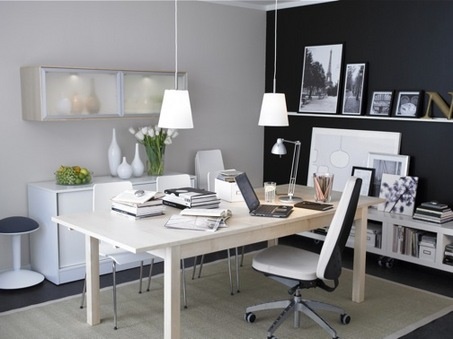Choosing The Right Office Chair

Whether you’re looking to make your home office a more professional space, or you’re due an upgrade at work, choosing the right office chair is essential to good health and productivity.
Of course, not all office chairs are the same. And different spaces, jobs and people require different things. For example, executive office chairs are designed to maximize comfort while ergonomic chairs are designed to help your posture and protect your joints. Some task chairs are designed for sitting at desks and others are for working at tilting tables or standing desks.
So, what makes a good chair for you? And how do you go about choosing the right office chair? Buying a new office chair does take a bit of time and research to you find the best design and features for you. Here’s what you should be looking for:
Adjustability
Adjustability is a really important thing to look out for and office chairs can adjust in several different ways. At the very least, your chair’s height should be adjustable so you can set it at the correct height for your desk. Before buying a chair, check how high your seat needs to be to sit comfortably with your lower arms resting level on your desk’s surface.
Aside from this basic adjustment, there are other functions to look for too. Wheeled feet will give you the ability to move freely in and out of your chair as well as easily sit at the right distance from your desk. And a tilting seat can be handy for protecting your pelvic joints and easing the strain on your muscles.
Materials
You may be thinking a nice leather executive chair or stylish velvet covered number is just what your office needs. However, you need to think about those long hours in hot and stuffy conditions and how you can reduce your discomfort. Well-designed task chairs often feature mesh material backs to increase airflow and breathability, keeping you cooler.
You also need to think about the durability and maintenance of your chair’s materials. Leather is easy to clean but does require more maintenance to prevent it cracking, and fabric may be harder to clean but it’s affordable, durable and comfortable.
Shape
You may also notice that office chairs come in a variety of shapes. Some look modern and chic, others simply look odd, and you may wonder why this is. Well, those odd-looking chairs may actually be designed for a specific task or they may simply be ergonomically designed.
An s-shaped back is one common ergonomic feature you’ll see on office chairs, which offers you lumbar support. But there are other design features to look out for too. If you’re sitting for long periods of time, look for a waterfall or contoured edge to your seat as this will improve circulation and an adequately padded seat is a must. And if you’re prone to hunching forwards, a headrest may help you improve your posture.
Size
Finally, let’s discuss size. This isn’t the most obvious thing to look for in an office chair but it’s surprisingly important.
Most importantly, you need to make sure your seat area is adequate. Many chairs designed for the home office are quite compact, so it’s essential to check you’re not squeezing into or perching on a small seat area. This will soon become uncomfortable.
And at the other end of the scale, beware of ergonomic executive chairs that are designed to fit a man’s frame. Ergonomic features only work if they fit your build. So, check measurements before buying, and if you can try before you buy.

